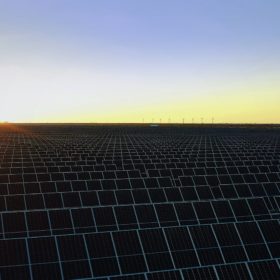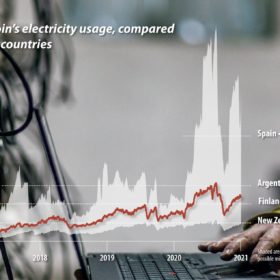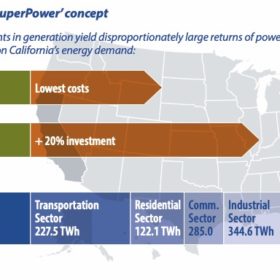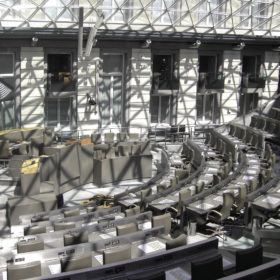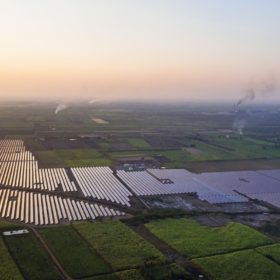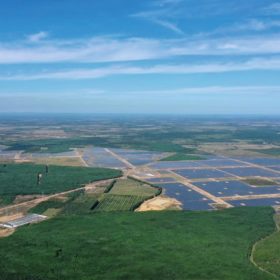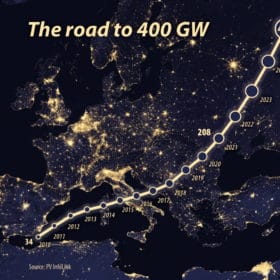Policy driving expansion
The U.S. renewable energy market is on a tear. According to the International Renewable Energy Agency, the United States added 29 GW of renewable energy capacity in 2020 – almost 80% more than the year before. But high growth rates are needed to meet the Biden administration’s goal of a carbon-free electricity grid by 2035. Policymakers are now discussing a slew of measures in Washington to accelerate the clean energy transition, reports pv magazine publisher Eckhart K. Gouras.
Reshaping the climate conversation
Inventor, serial entrepreneur, energy analyst and scientist Saul Griffith is set to add the title of “author” to his collection with the October publication of his new book, “Electrify: An Optimist’s Playbook for Our Clean Energy Future.” Griffith – the CEO of Otherlab and the founder of Rewiring America and Rewiring Australia – says that the discussion of rapid decarbonization can be reimagined by thinking about the electric “machines” that can be installed in our homes.
Crypto’s energy conundrum
In a financial world of stocks, bonds, foreign exchange, and credit cards, trillions of dollars are traded daily, with money flows handled by a bevy of databanks. In the world of cryptocurrency, billions of dollars worth of Bitcoin are traded through as many as 400,000 transactions per day, consuming the energy supply of a modernized country. The quirk is a “proof of work” feature that provides decentralized security. Is Bitcoin’s energy usage all for nothing, or is it a game-changer for renewable assets and generators? Tristan Rayner explores.
Development disrupted
It may be the best of times, or it’s the worst – it rather depends on who you talk to. Either way, 2021 has not been a dull year in the global solar industry. Polysilicon and commodities prices, shipping costs, tariffs, and energy shortages have all taken turns to give the supply chain a beating, but has it sent PV development off course?
Solar, wind, storage superpower
Tony Seba was among the first to recognize the disruptive potential of solar PV with the publication of his book “Solar Trillions” in 2010. His think tank, RethinkX, recently published a report titled “Rethinking Energy 2020-2030 – 100% Solar, Wind and Batteries is Just the Beginning.” In early December, pv magazine publisher, Eckhart Gouras, interviewed Seba and Adam Dorr, the two authors of this report. As Seba and Dorr make clear in the interview, a 100% solar-wind-battery system is not only possible, but the cheapest way to build an electricity system in the U.S. by 2030. They introduce the concept of the “Clean Energy U-curve,” which shows that the cheapest system is actually one that involves a lot more solar PV and wind power capacity than the peak power demand profile. But they go one step further by introducing the concept of “SuperPower”: by investing in even more solar PV and wind power than the lowest-cost system defined by the “Clean Energy U-curve,” the gain in additional energy, or “superpower,” is exponential to the money invested.
What Asia needs to turn away from coal
Given the rapid decrease of the solar electricity cost, pv magazine explores the drivers and obstacles behind switching off coal and embracing photovoltaics and other renewable energy technology in Asia. The good news: things are moving in the right direction.
Smart meter disruption in Flanders
The installation of digital smart meters, in theory, could be extremely positive for the development of rooftop PV and energy communities, as smart meters allow customers to monitor their energy consumption and production, as well as their consumption habits. But the rollout of smart meters in parts of Belgium have left PV “prosumers” high and dry, with tariffs for solar feed in curtailed.
The feasibility of India’s auctions
The offtaker’s creditworthiness, the ease of land acquisition, infrastructure readiness, policy consistency and clarity, and access to low-cost funds are among the key determinants for the success of large-scale PV auctions in India, writes Uma Gupta in New Delhi.
Five trends to watch in Southeast Asia
Minh K Le, senior renewables analyst at Rystad Energy, examines five key trends to watch in Southeast Asia utility-scale solar, as mega-scale projects ramp up, Indonesia emerges, and Vietnam steps back.
Driving toward the inflection point
An inflection point for European solar is beginning to take shape as the industry finds itself in a period of acceleration and transformation. pv magazine’s European editors – Emiliano Bellini, Sandra Enkhardt, Gwénaelle DeBoutte, and Pilar Sánchez Molina, along with Jonathan Gifford – look at four trends shaping the market.
